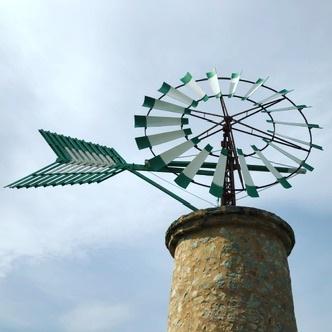How do the tectonic features of the Balearic Islands influence local weather patterns?
Similar Topics
balearic islands tectonics
local weather patterns
mediterranean climate
tramuntana wind
orographic rainfall
mountainous terrain influence
sea surface temperatures
underwater tectonic structures
The tectonic features of the Balearic Islands play a subtle yet significant role in shaping local weather patterns by influencing both the islands’ topography and their interaction with atmospheric processes. Positioned in the western Mediterranean Sea, the Balearic Islands are situated near the complex boundary where the African and Eurasian tectonic plates converge. This tectonic activity has given rise to the islands’ uneven terrain, characterized by mountainous areas such as the Tramuntana range in Mallorca. These elevated landforms affect wind flow and precipitation distribution, creating microclimates that vary across the islands.
The mountainous landscapes act as natural barriers that can interrupt prevailing winds and cause air masses to rise, cool, and condense, leading to orographic rainfall in the higher altitudes. This phenomenon is particularly evident on the northern slopes of Mallorca, where increased precipitation contrasts with the drier southern coasts. Moreover, the rugged terrain influences local winds like the Tramuntana wind, which blows from the north, bringing cooler air and affecting sea surface temperatures around the islands. This interaction between tectonically shaped landforms and atmospheric conditions helps moderate the islands’ Mediterranean climate, contributing to its characteristic warm, dry summers and mild, wet winters.
Additionally, the underwater tectonic structures surrounding the Balearic Islands, such as the Balearic Basin and associated faults, influence the depth and shape of the seabed. This underwater topography can affect ocean currents and sea surface temperatures, further impacting local weather and climate patterns. For example, variations in sea temperature and coastal winds influenced by the sea-floor configuration can lead to localized weather variations, affecting everything from marine fog formation to daytime temperature ranges on the islands. Ultimately, while the tectonic features do not dictate the day-to-day weather, they establish the framework for the diverse and unique climatic conditions experienced across the Balearic Islands.
The mountainous landscapes act as natural barriers that can interrupt prevailing winds and cause air masses to rise, cool, and condense, leading to orographic rainfall in the higher altitudes. This phenomenon is particularly evident on the northern slopes of Mallorca, where increased precipitation contrasts with the drier southern coasts. Moreover, the rugged terrain influences local winds like the Tramuntana wind, which blows from the north, bringing cooler air and affecting sea surface temperatures around the islands. This interaction between tectonically shaped landforms and atmospheric conditions helps moderate the islands’ Mediterranean climate, contributing to its characteristic warm, dry summers and mild, wet winters.
Additionally, the underwater tectonic structures surrounding the Balearic Islands, such as the Balearic Basin and associated faults, influence the depth and shape of the seabed. This underwater topography can affect ocean currents and sea surface temperatures, further impacting local weather and climate patterns. For example, variations in sea temperature and coastal winds influenced by the sea-floor configuration can lead to localized weather variations, affecting everything from marine fog formation to daytime temperature ranges on the islands. Ultimately, while the tectonic features do not dictate the day-to-day weather, they establish the framework for the diverse and unique climatic conditions experienced across the Balearic Islands.
🧩 Related Questions
Related Question
What role does research and data analysis play in helping Mallorca beekeepers adapt to environmental changes?
Related Question
How do seasonal weather patterns in Mallorca impact the timing of almond harvests?
Related Question
What are common misconceptions tourists have about shopping hours and local business schedules in Mallorca?
